Indoor plants do more than just beautify our homes—they are powerful tools for enhancing positive energy and creating a healthy, vibrant environment. According to principles of Vastu Shastra and Feng Shui, how and where you place plants inside your home significantly influences the flow of energy, or “chi.” A well-thought-out indoor plant arrangement can reduce stress, purify the air, and attract harmony, prosperity, and well-being.
In this article, we’ll explore smart and mindful ways to arrange indoor plants that elevate your space’s aesthetic while inviting in positive energy. Let’s dive into practical placement ideas, plant types, and energy-enhancing tips for every room in your home.
Why Plant Placement Matters
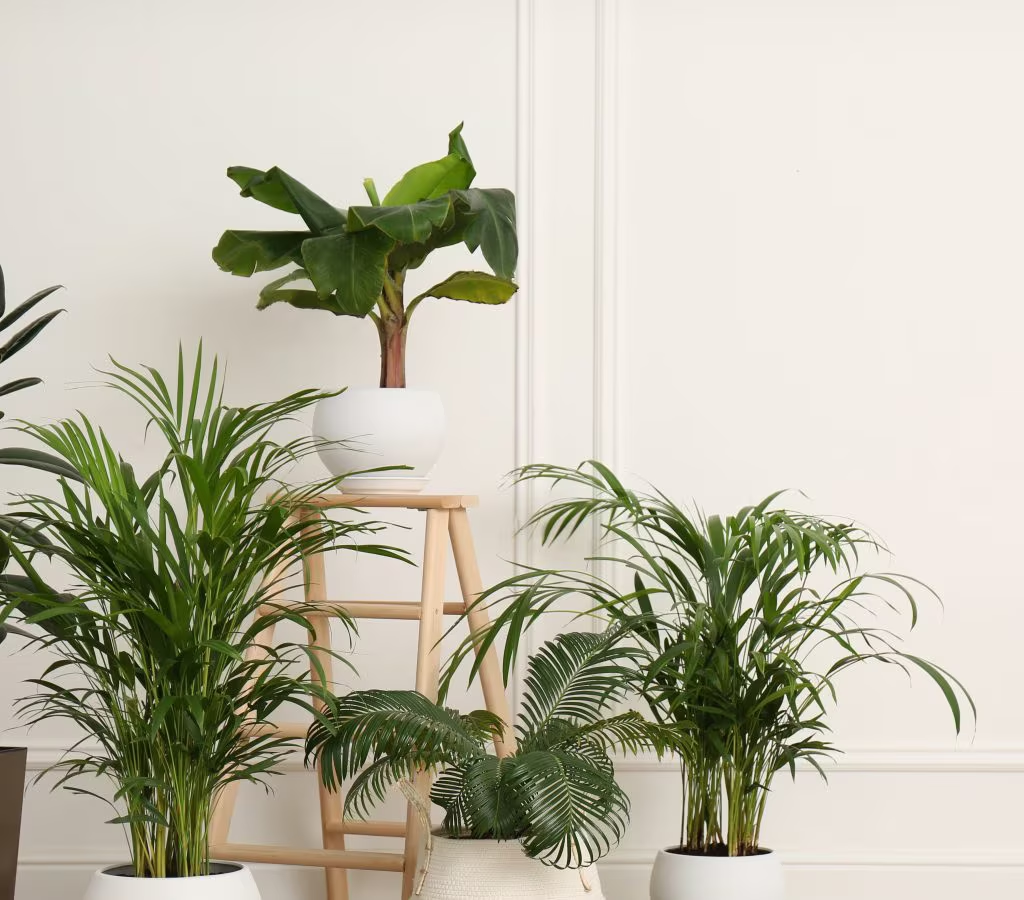
Plants emit living energy—referred to as prana in Vastu and chi in Feng Shui—which affects the mood, vitality, and overall vibe of a space. A cluttered or misaligned arrangement can trap stagnant energy, while an intentional display of greenery promotes clarity, balance, and emotional well-being.
Benefits of a Positive Energy Plant Arrangement
- Improves indoor air quality
- Reduces stress and anxiety
- Boosts creativity and productivity
- Enhances sleep and restfulness
- Attracts wealth, health, and love (as per Vastu/Feng Shui)
General Indoor Plant Placement Tips
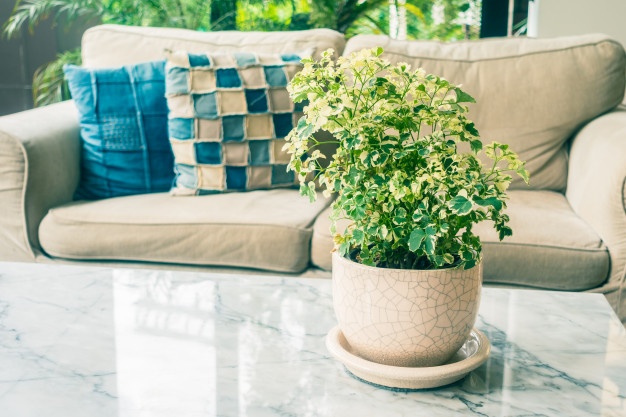
1. Use the Power of Natural Light
Position your plants where they can access ample indirect sunlight, such as near windows, balconies, or skylights. Sunlight not only nourishes the plant but also energizes the space it occupies.
Tip: South or east-facing windows are ideal for most indoor plants as they receive bright, uplifting morning sunlight.
2. Avoid Cluttered Corners
Crowding too many plants in one spot can block energy flow. Instead, choose strategic corners that feel empty or lifeless, especially the northeast or southeast corners of a room, which are linked with prosperity and health in Vastu.
3. Balance Is Key
Group plants by size to create a visual balance—tall floor plants in the back, medium plants on tables, and small plants on shelves or windowsills. Balance ensures that energy circulates harmoniously and doesn’t overwhelm a space.
4. Keep Plants Healthy
Unhealthy, dusty, or dying plants emit negative vibrations. Always prune yellow leaves, wipe dust off the foliage, and re-pot when needed. A thriving plant equals thriving energy.
Room-by-Room Plant Arrangement Guide
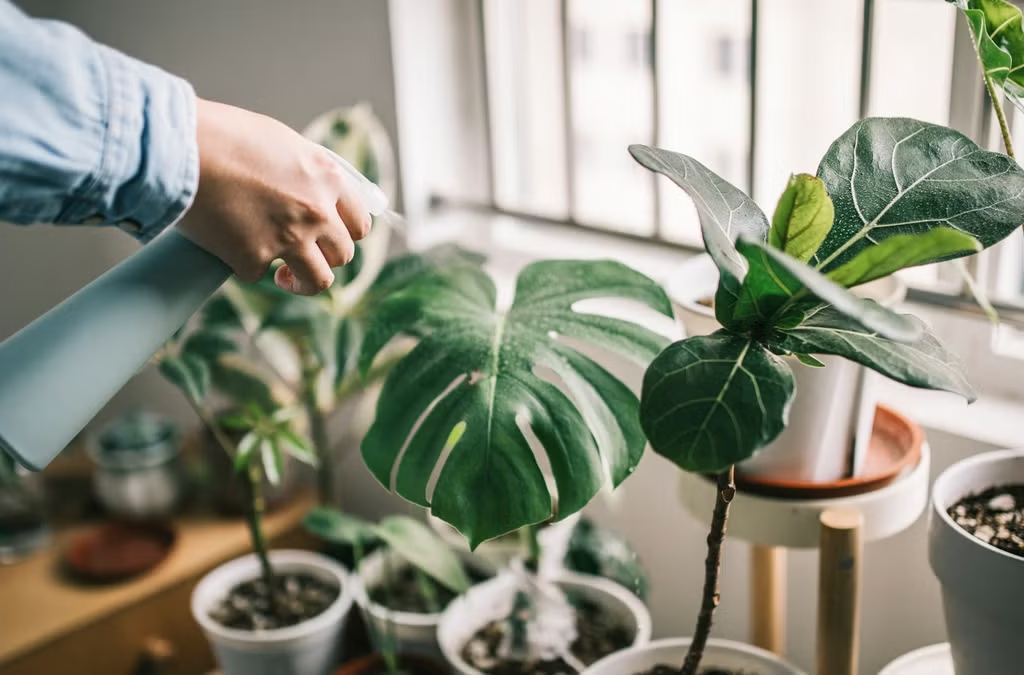
1. Living Room: Energize and Invite Prosperity
The living room is where family gathers, guests are entertained, and energy exchanges occur. Use this space to make a bold, vibrant impression.
Best Plants for Living Room:
- Money Plant (Pothos): Symbol of wealth and abundance.
- Areca Palm: Purifies air and adds tropical elegance.
- Peace Lily: Cleanses negativity and enhances peace.
- Fiddle Leaf Fig: High aesthetic and energetic value.
Placement Tips:
- Place a large leafy plant in the southeast corner to attract financial growth.
- Use hanging planters near windows for a light, cheerful vibe.
- Add tabletop arrangements with polished pots for elegance.
2. Bedroom: Create Calm and Restfulness
Your bedroom should be a sanctuary of relaxation. Overcrowding with large plants may disturb restful energy, so go for minimal, low-light species that aid sleep.
Best Plants for Bedroom:
- Lavender: Reduces stress and promotes sleep.
- Snake Plant: Emits oxygen at night and cleans the air.
- Aloe Vera: Heals and purifies.
- Valerian or Jasmine: Known for calming scents.
Placement Tips:
- Keep one or two plants on nightstands or window ledges.
- Avoid placing plants directly near the bed’s headboard.
- South or southwest placement encourages stability in relationships.
3. Kitchen: Spark Creativity and Digestive Health
The kitchen represents nourishment and creativity. A clean, green corner can balance fire and water elements, encouraging health and inspiration.
Best Plants for Kitchen:
- Herbs (Basil, Mint, Rosemary): Fresh fragrance and culinary use.
- Aloe Vera: Handy for burns and boosts positive energy.
- Spider Plant: Removes toxins and thrives in bright kitchens.
Placement Tips:
- Line herbs along a sunlit windowsill.
- Place small pots on open shelves or counters, but avoid cluttering stove areas.
- North or east corners are ideal for herb plants as per Vastu.
4. Bathroom: Cleanse and Purify
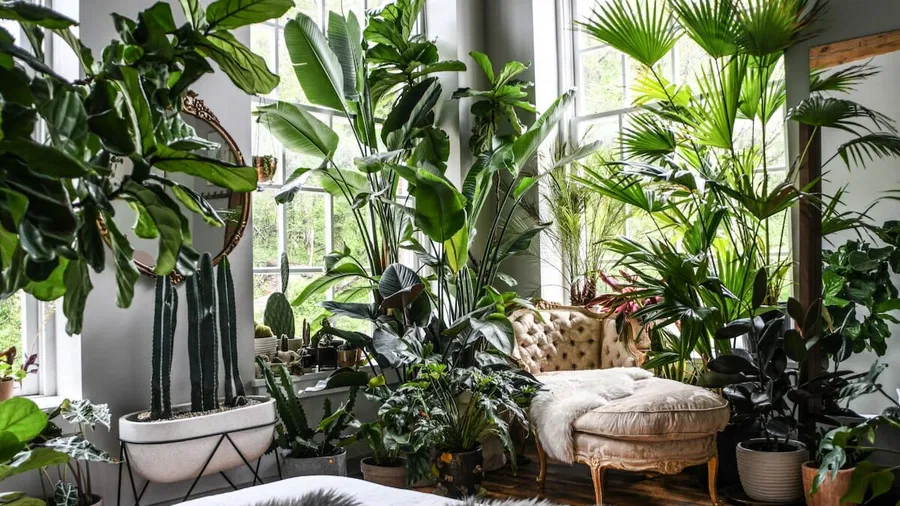
While it may seem unusual, the bathroom is a great place to neutralize excess moisture and stagnant energy. Plants thrive in its humid environment.
Best Plants for Bathroom:
- Boston Fern: Loves moisture and filters toxins.
- ZZ Plant: Low maintenance and visually appealing.
- Philodendron: Hardy and graceful.
Placement Tips:
- Use small pots on shelves or hanging planters.
- Keep away from direct contact with water.
- Place in the northwest direction to boost energy flow.
5. Entryway or Hallway: Set the Tone
Your home’s entrance determines how energy flows into your space. A beautiful green display here ensures that only positive vibrations enter.
Best Plants for Entry/Hall:
- Lucky Bamboo: Attracts luck and harmony.
- Rubber Plant: Brings prosperity and removes toxins.
- Orchids: Enhances beauty and creativity.
Placement Tips:
- Place symmetrical pots on either side of the main door.
- Use vertical plant stands for narrow hallways.
- Choose vibrant, fresh, and blooming plants to make a strong energetic impact.
Special Energy-Boosting Plant Arrangement Tips
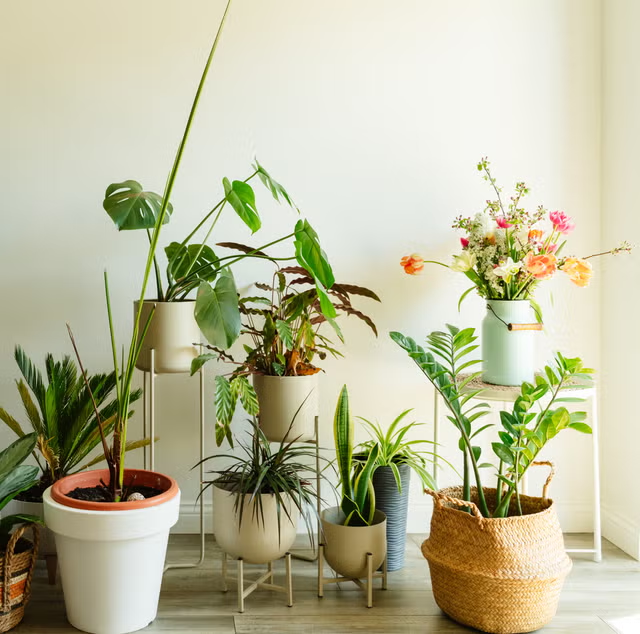
1. Use Crystal Planters or Energized Pots
Enhance the metaphysical power of your plants by using planters made of terracotta, copper, or even crystals like amethyst or rose quartz. These amplify energy flow and emotional harmony.
2. Incorporate the Five Elements
Blend plants with décor elements representing earth, water, fire, air, and space for a balanced environment:
- Earth: Plants and soil
- Water: Small water fountains or misting
- Fire: Candles or warm lighting nearby
- Air: Good ventilation
- Space: Minimalist arrangement with open areas
3. Go Vertical with Wall Planters
Vertical plant walls or hanging arrangements help save space while promoting upward energy movement, which is associated with growth and positivity.
4. Introduce Aromatic and Flowering Plants
Scent plays a vital role in mood and energy. Use fragrant indoor plants like jasmine, gardenia, or lavender to keep the ambiance vibrant and fresh.
5. Rotate and Refresh
Rearrange your indoor plants every few weeks. This simple practice resets the energy flow and invites renewed vitality into your home.
Plants to Avoid Indoors (As per Vastu and Feng Shui)
- Cacti or thorny plants (except rose): Can cause discord and irritability.
- Dried flowers or artificial plants: Represent stagnancy or lifeless energy.
- Bonsai indoors: Symbolizes stunted growth.
- Dead or wilted plants: Emit negative vibrations.
Conclusion
Indoor plant arrangement isn’t just about aesthetics—it’s about channeling life force energy that nurtures your space and soul. Whether you follow Vastu, Feng Shui, or simply believe in the calming power of nature, using these tips will ensure that your home stays lively, balanced, and filled with positive energy.
Choose plants that resonate with your goals—be it wealth, health, peace, or creativity—and place them with intention and care. As you watch them grow, you’ll feel your own inner harmony flourishing right along with them.

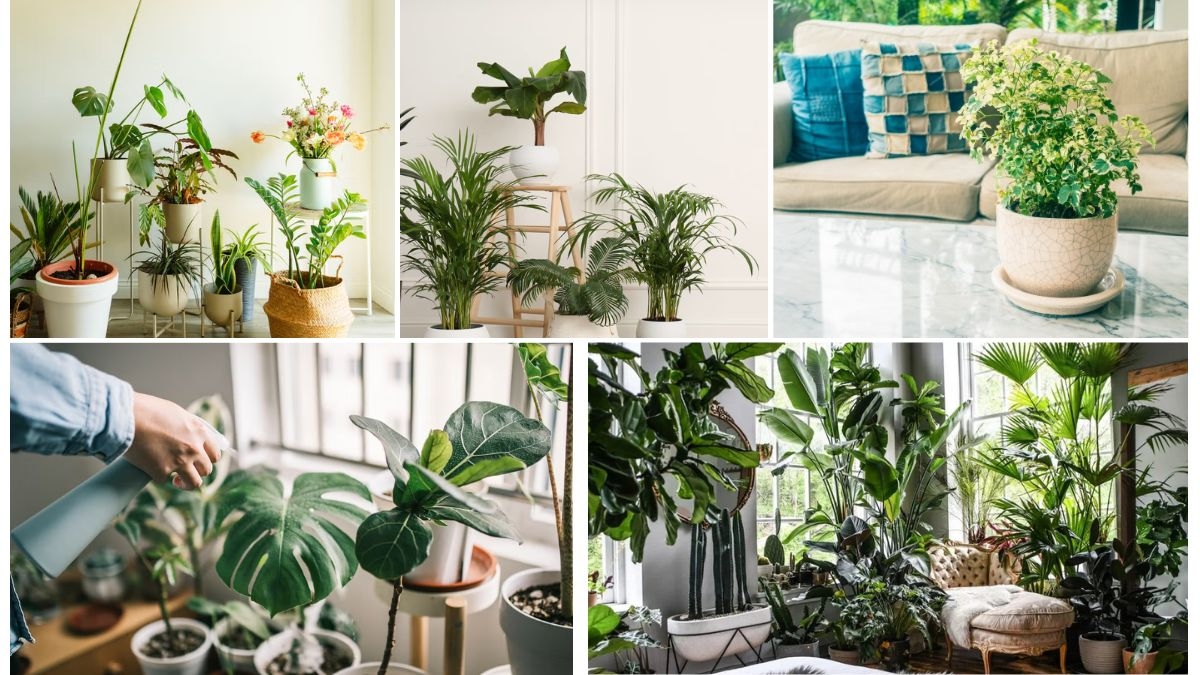





Leave A Comment